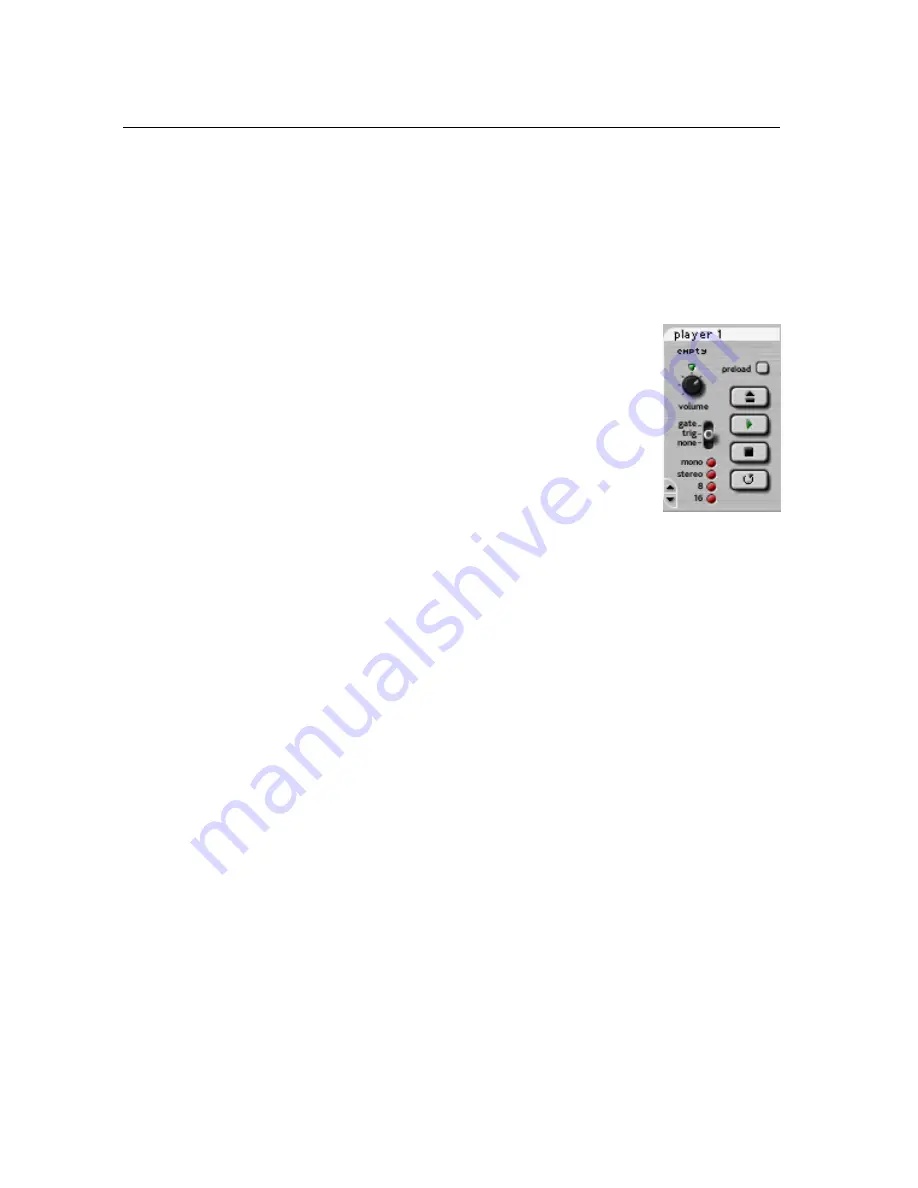
118
Specifications for modules
be sent to any other module for processing. The input signal is a gate signal, typically the gate
signal from a Keyboard, or a Sequencer which triggers the Player according to the gate-trig-
none selector. When the selector is at the gate position, the Player starts whenever a low-to-high
transition occurs and stops whenever a high-to-low transition occurs. When the selector is at the
trig position, the Player starts whenever a low-to-high transition occurs. When the selector is at
the none position, the gate signal is ignored. Every time the Player module is triggered, it starts to
play again the file from the beginning even if it has not yet reached the end of the file.
The Playermodule can also be started by pressing on the play button. If
the Player was already playing a file, pressing on the play button makes the
module start playing again from the beginning. The Player module can be
stopped by pressing on the stop button. The Player can also be put in a loop
mode by pressing on the loop button. In this mode the Player will start to play
again the file from the beginning when it reaches the end of the recording and
will keep on doing this until the stop button is pressed.
The Player first starts to play an empty sound file. One can select a given
file by pressing on the select button (located above the play button) which will
make a browse window appear on the screen. Sound files can also be drag’n’dropped on the Player
module. The name of the file currently playing appears on the module front panel while its format
is indicated by the red LEDs on the bottom-left of the module.
Another way to have the Player playing a given file is to load a file and then save a preset with
the save arrow on the lower left corner of the module panel. The Player will play the same file the
next time the preset is loaded.
Typical Use
In the example of Figure 75 under Shifter, a sample played with the Player module is pitch-shifted.
Notes: When small sound files are involved, it may be advantageous to preload the file in memory
using the preload button.
In order to facilitate the exchange of patches and presets between them, users are encouraged
to copy their sound files in the folder which name appears in the General Preferences dialog box.
File format supported
•
PC: mono, stereo 8 or 16-bit wave files. The sampling rate of the file must match the sam-
pling rate of the audio settings.
•
Mac: any AIFF, AIFC, Wave or MP3 file readable by QuickTime.
See also the Recorder and Recorder2 modules.
Содержание TASSMAN
Страница 1: ...USER MANUAL ...






























